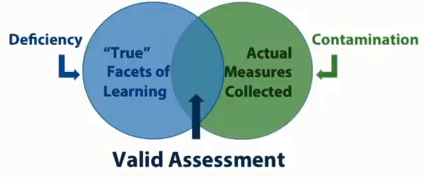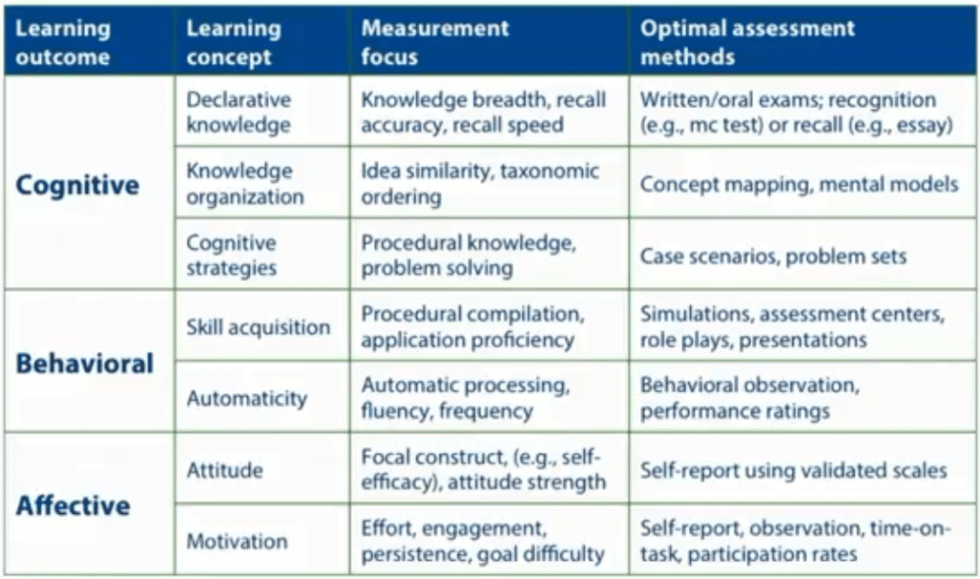How to Increase Valid Learning Assessment
March 8, 2018

The learning outcomes assessment process is composed of multiple stages which come together to form a learning outcomes assessment report. One of these stages is the assessment of learning outcomes through the implementation of assessment methods.
Higher education institutions currently employ multiple assessment methods to measure learning outcomes. Examples of such methods include:
- Essay Exams
- Homework Assignments
- Business Simulations
- Case Analyses
- Group Term Projects
- Term Papers
- Multiple-choice Exams
- Oral Presentations
The majority of assessment methods have a key limitation that minimizes the valid learning assessment of affective, behavioral, and cognitive learning outcomes. Most methods are not interchangeable in how well they assess the three different types of outcomes you’re trying to measure. As a result, learning assessments are always imperfect.
The Criterion Problem
The multidimensionality of the learning process is characterized by the three learning outcomes mentioned above. This multidimensionality also means the learning assessment process will always be flawed. These flaws can the attributed to the ‘Criterion Problem’, or the inherent difficulty in measuring multidimensional concepts.
Let’s delve deeper into the ‘Criterion Problem’ by examining the following Venn diagram.

The blue circle represents true learning while the green circle represents the measures collected from learning assessments. The goal as educators is to increase the overlap between the two, maximizing valid assessment while minimizing deficiency and contamination.
Deficiencies are the things and metrics we should be assessing but we’re not. On the other hand, contamination occurs as a result of assessing things that aren’t related to true learning.
So how can you maximize the overlap? This can be accomplished by using multiple assessment methods at a time. For example, pairing a group term project with a 360-survey would allow you to measure topic knowledge (cognitive outcomes) while also measuring teamwork and leadership skills (affective outcomes).
Maximizing the overlap between the two circles can also be accomplished by linking specific learning outcomes to their optimal assessment method.
Outcomes-Assessment Link
There are optimal assessment methods that directly link to each specific learning outcome. Using the optimal method can increase the validity of your results and interventions. Take a look at the table below to identify the learning outcome-assessment method link.

To learn more about assessment methods and their importance in validating your learning outcome assessment process and increasing valid assessment, access your free eBook – The Ultimate Guide to Learning Outcomes Assessment. This eBook will also provide you with expert recommendations on how to structure and format your learning outcome assessment reports for accreditation documentation.


.png?width=80&name=1-questions%20(1).png)